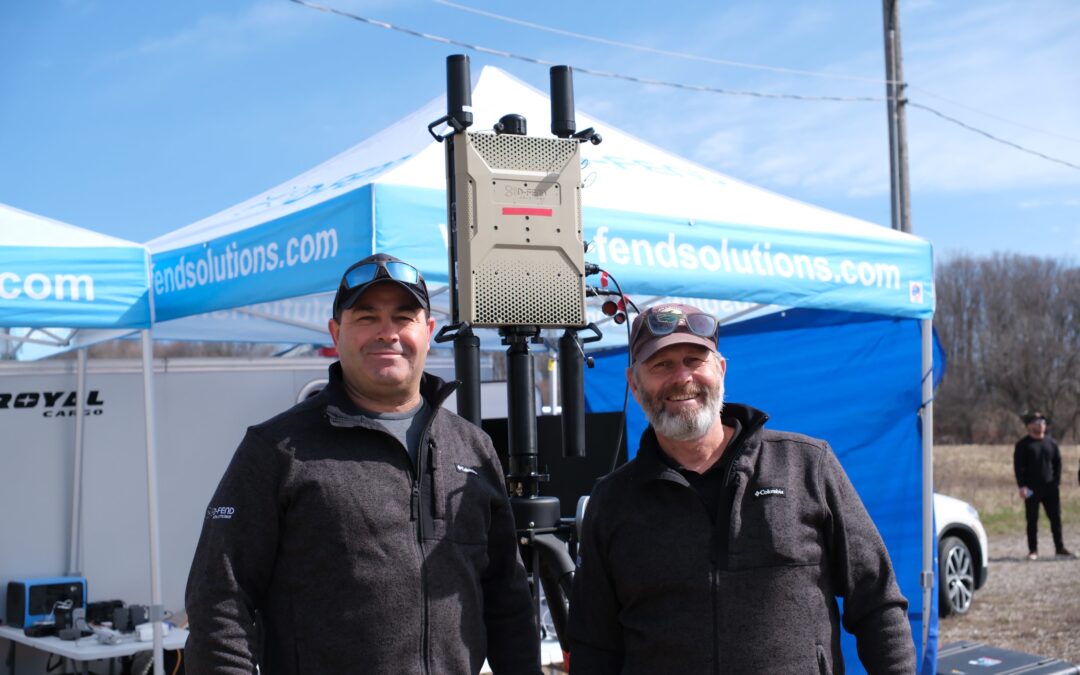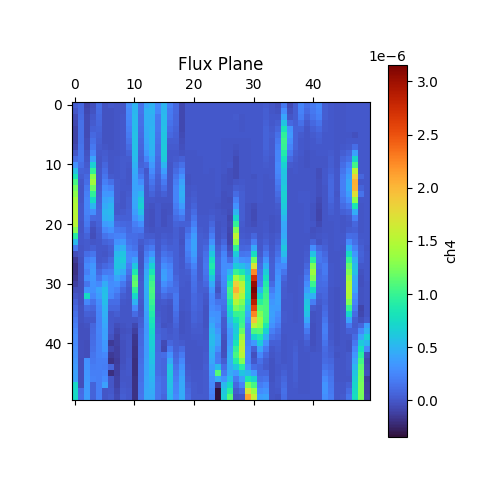
Thirty-one drones detected at Niagara Falls during eclipse – most of them breaking regulations
By Scott Simmie
The solar eclipse attracted more than sightseers to Niagara Falls.
It also brought out drones – with as many as 31 detected at a single point in time. A few of those drones were authorised to be flown by law enforcement, but the majority were being flown by people who either weren’t aware of the regulations, or wilfully ignored them.
That’s because Niagara Falls is Class F Airspace. And the Park makes the policies very clear:
“Niagara Parks does not permit the use of drones within the property for any recreational purposes. Use of drones for commercial projects (commercial film, photography, survey or engineering work, etc.) may be considered and approved under a Permit,” reads the Park’s website page outlining the rules for film, photography, recording and drones. It goes on to the nuts and bolts of the airspace restriction.
“The airspace surrounding Niagara Falls is classified as CYR-518 Class F Restricted Airspace which further requires a Letter of Authorization from Transport Canada prior to Niagara Parks issuing a permit. Transport Canada’s authorization is required no matter the size or weight of the drone or how low or high the flight path.”
So no, you can’t take your sub-250g drone and think you’re in the clear.
But that didn’t stop a lot of people from putting drones into the air. And that’s cause for concern, given that helicopters and other traditional aircraft with special permission are in that same airspace for tours.
Below: Collage of the eclipse by Solar Eclipse by KMHT Spotter, Wikimedia Commons 4.0.

THE NEWS
Word of the multiple drones in the air came at the Canadian Hazmat and CBRNE Summit in Kitchener, where that acronym stands for Chemical, Biological, Radiological, Nuclear, and Explosive. It brought together First Responders, law enforcement and Hazmat specialists from across the country. The conference featured a heavy emphasis on how technology – drones, ground robots, ROVs, counter-UAS systems and more – have become essential tools for law enforcement and other First Responders.
One of the sessions focused on the D-Fend Solutions EnforceAir counter-UAS system, which was seen in use in an exercise with Niagara Police during the solar eclipse to monitor drones. It’s a critical area because there are often crewed aircraft, helicopters in particular, taking tourists for flights over the falls. It is also, as noted, restricted airspace where no drones that do not have special authorisation should be in the air.
But the system picked up plenty of them.
“We saw at one point 31 drones in the air at one time at Niagara Falls during the eclipse,” David Beatty, Director of Sales for D-Fend Solutions Canada, said in a presentation. That kind of traffic, he added, could mean “a possibility of a mid-air collision not just between the drones, but also with the manned aviation that was flying at the same time at the same place.”
INTRUDERS
A small number of those drones were being flown by law enforcement and marked as “authorised” by the EnforceAir system operator. But the vast majority were not. And not only were those drones in restricted airspace, at least one was detected breaking two other regulations: It was flying at an altitude of 1640′ above ground level and far Beyond Visual Line of Sight. (Transport Canada regulations limit drones – in airspace where they can be flown – to 400′ AGL and within Visual Line of Sight without special authorisation.)
“The system identified the operator was four kilometres away flying at that altitude which was impeding both fixed wing and rotary aviation,” said Beatty in a follow-up interview with InDro Robotics. “Our understanding is that Niagara Police, because they have the residence location, will be conducting followup visits to the perpetrators.”
The EnforceAir operator team was also able to relay information about drone positioning in real-time to a helicopter pilot who was carrying out flights over the falls, ensuring he had airspace awareness.
Below: David Beatty with the D-Fend system during a demonstration. Scott Simmie photo.

THE D-FEND SOLUTIONS SYSTEM
Developed in Israel, D-Fend Solutions originally began as a counter-drone solution for multiple Tier One agencies – meaning special forces and other elite services in the military and intelligence sectors around the world. Current clients listed on its website include three US federal departments: Defence, Homeland Security and Justice. A D-Fend system is also being evaluated for airport use by the FAA.
But D-Fend Solutions is now seeing opportunities in the broader market. This has come with both the widespread proliferation of drones, as well as their potential to be modified for nefarious and criminal purposes – including the frequent attempts to deliver contraband to prison yards.
“We were primarily dealing in the military realm, but based upon the threats that have occurred to public safety we’ve expanded into that marketplace,” explained Beatty. D-Fend Solutions products have been used at large public gatherings, to detect and mitigate drones at prisons and near critical infrastructure – including major airports.
And while drones can potentially cause conflict with traditional crewed aircraft, Beatty says there’s concern about another threat that has emerged in recent years.
“As we see in the conflict in the Ukraine, they are the poor man’s Air Force. Drones are very easily weaponised, and that could be someone flying the drone directly into someone, or placing some form of munition or chemical irritant on it.”
Beatty says clients have also seen an increase in the use of drones at protests, flying dangerously close over the heads of people – and even interfering with police drone activity.
Below: D-Fend Solutions at a demonstration for First Responders

HOW IT WORKS
There’s a variety of types of c-UAS systems on the market. They range from direct energy type weapons (think lasers) to kinetic (nets, etc.), frequency jamming and radar. The D-Fend Solutions system is a passive cyber-solution, meaning there’s no direct jamming or kinetic action. It also meets what are sometimes called the “Four Pillars” of a complete c-UAS system, including the ability to detect, track, identify and mitigate.
“The system detects drones at ranges in excess of five kilometres,” says Beatty. “We will track the drone so we know its flight path. We identify the drone to the point where we get the serial number of the drone, the controller, the make and model of the drone, with options for mitigation.”
Before we get to mitigation options, it’s worth explaining that the D-Fend Solutions system is constantly listening for the unique characteristics of the drone. That’s how it detects not only the type of drone but also other relevant information.
In terms of mitigation, there are multiple options. D-Fend Solutions can support a geofence, for example, that prevents drones marked as unauthorised from flying into a certain area. They’ll simply hit the boundaries of that geofence and can then be tracked or fended off. A rogue drone can also be forced to simply stop and hover in a location so that ground observers can get a closer look to determine if it poses a threat.
“The final option is that we can take control of the drone and send it on a safe passage to a safe collection point. And the emphasis is always on control.”
And how does the system do that passively, without jamming frequencies (where Industry Canada has some pretty strict rules)? Quite simply, it can trick the drone so that D-Fend Solutions becomes the control system.
Two of multiple drones being tracked by D-Fend Solutions at a demonstration outside Kitchener.

SOMETIMES, IT’S ABOUT EDUCATION
The D-Fend Solutions EnforceAir system identified the location of the drone pilots violating the regulations at Niagara Falls on the day of the eclipse. An officer involved said during the conference there will be a follow-up with the pilot of that BVLOS drone flying at 1640′. It’s unclear whether this will be an informal education session, or whether any further action will be taken.
But sometimes, education is also a key tool. And that’s enabled by the system pinpointing the location of the pilot.
“This allows for a form of soft policing – in lieu of mitigating the drone, the police are able to educate the public with direct intervention by police units and the drone operator,” says Beatty.
Thankfully, there were no mishaps on April 8. Crewed air assets (and police drone operators) were kept in the loop on the location of all unauthorized drones.
Below: The company even has a version that fits in a backpack
INDRO’S TAKE
The D-Fend Solutions system provided important airspace awareness – and was a critical safety tool – during the eclipse event at Niagara Falls. The system has been demonstrated at several other major public events in Canada, providing critical awareness to law enforcement and other First Responders. The company’s EnforceAir product won first place for hardware and systems design at the 2023 AUVSI XCELLENCE awards.
“There’s a growing demand for c-UAS products globally, whether for public safety, critical infrastructure, airport security – even for protection from pirates on the high seas,” says InDro Robotics CEO Philip Reece.
“D-Fend Solutions EnforceAir provided an important solution during the Niagara demonstration, and its ability to mitigate without jamming or kinetics is impressive.”
You can learn more about D-Fend Solutions here.
We’d be remiss if we didn’t also mention Bravo Zulu Secure, an InDro sister company that also offers detection and mitigation solutions. The incident detailed above is also reminiscent of the detection of many illegal drone flights in Ottawa during the convoy protests. If you haven’t seen that one, it’s definitely worth a read.


























